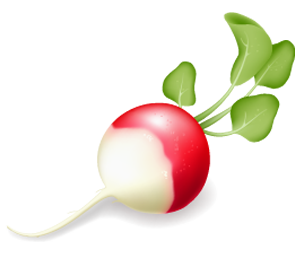Summer
The following planting table shows varieties suitable for sowing or planting during the months of December, January and February.
What to Grow
Click on the month in the table header to sort varieties based on the month of planting or sowing.| VARIETY | D | J | F |
|---|---|---|---|
| Beetroot | S | S | S |
| Broccoli | ST | ST | T |
| Brussel sprouts | ST | ST | T |
| Cabbage | ST | ST | T |
| Carrots | S | S | S |
| Cauliflower | ST | ST | T |
| Celery | T | T | S |
| Chicory | S | S | S |
| Chinese cabbage | S | S | - |
| Cucumber* | ST | T | - |
| Endive | S | S | S |
| Kohlrabi | ST | ST | T |
| Leeks | S | S | - |
| Lettuce | ST | ST | ST |
| Marrows | T | - | - |
| Parsnips | S | S | S |
| Potatoes | S | S | - |
| Radish | S | S | S |
| Silverbeet | ST | ST | T |
| Squash* | ST | - | - |
| Swedes | - | S | S |
| Sweet Corn | ST | T | - |
| Tomatoes* | T | T | - |
| Turnips | - | S | S |
S = seed sowing; T = transplanting
* When planting these seeds before November, the seed should be started in punnets indoors and the young seedlings kept in a warm sheltered place. Plant out the seedlings once the soil has warmed and the danger of frost has passed.
This table is a guide only—observe seasonal weather patterns before deciding when to plant, as there will often be distinct differences in summer weather from one year to the next.

Planting times will vary for different varieties of the one vegetable, for example December plantings of heading lettuce varieties should be successful while February plantings should be the butterhead varieties.

Growing Notes
Mulch and compost
In summer it is a good idea to mulch your garden beds to help keep the soil cool and moist. One experiment showed that a 4cm layer of straw reduced evaporation by 73%. Be careful not to lay down a thick layer of sawdust or lawn clippings that can pack down to form an impenetrable barrier to water.
Soil with lots of compost contains all the nutrients your plants need for strong, healthy growth. In addition well composted soil retains water and act like a sponge to keep your plants moist through dry summer days.
Heat protection
On days of extreme temperature your plants may need to be physically protected from the heat. This can be achieved by covering plants with shade cloth secured on a frame eg weldmesh or irrigation pipe bent over to form a tunnel, with shade cloth secured by pegs) making sure that there is no way that wildlife can be trapped or snagged.
Watering
Try not to water the leaves of plants that are susceptible to fungal diseases (eg tomatoes, cucumbers, pumpkins and zucchinis) and try to water individual plants thoroughly, rather than watering a whole area.
Always follow water restrictions and check soil moisture before watering—a rostered watering day doesn’t mean you must water.
Weeds
Keep weeds down. They compete with your plants for food, water and sunlight. It is best to tackle them when they are small—before removing them becomes an exhausting exercise.
Pests
Pests can multiply over summer. Don’t reach for the pesticides. Observe if there are natural predators present, remembering that there will be a delay between the appearance of the pest and the subsequent build-up of its
predators.
If you must spray, use an environmentally benign spray. Read books such as Jackie French’s Natural Pest Control.
Harvesting
Make sure you harvest your crop regularly—in most cases this will encourage your plants to continue cropping and you can enjoy your produce at its peak.
Remember to leave space in your vegie patch for those winter vegetables that prefer to be planted in late summer to early autumn. Brassicas and other winter crops need time to mature before the extreme cold of winter sets in.
